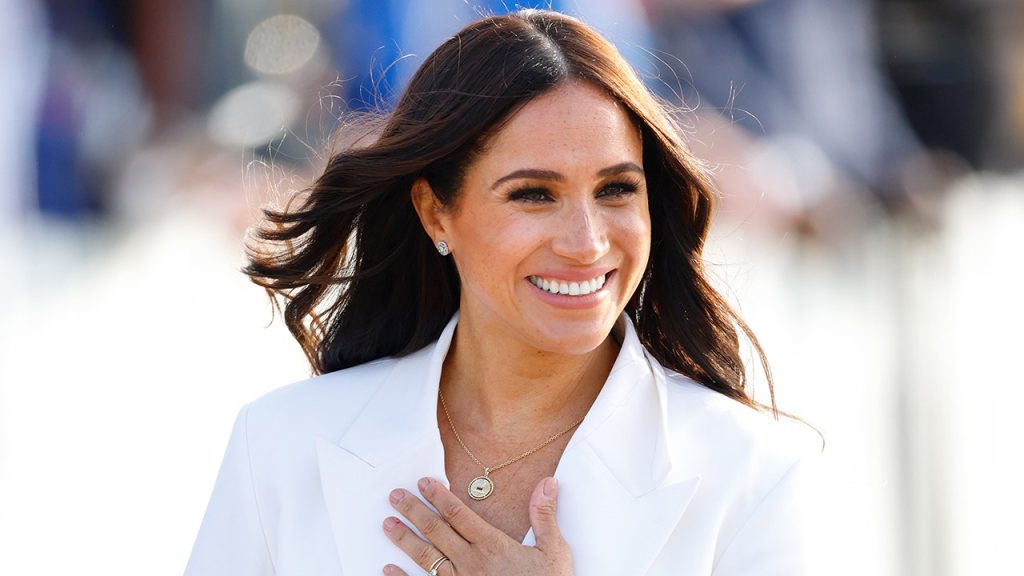The tumultuous journey of Meghan Markle as a member of the royal family is further explored in a recent book by royal author Tom Quinn, titled “Yes Ma’am: The Secret Life of Royal Servants.” Through conversations with palace staff, Quinn reveals insights into Markle’s time in Kensington Palace, where she was accused of having a “messiah complex” and was nicknamed the “Duchess of Difficult.” The book provides a narrative that paints a complex picture of Meghan’s intentions and the royal family’s response, illustrating the tensions that ultimately led to her departure from royal duties.
| Article Subheadings |
|---|
| 1) Insights from Former Palace Staff |
| 2) The “Messiah Complex” Mention |
| 3) Comparison to Princess Diana |
| 4) Palace Tensions and Meghan’s Approach |
| 5) The Aftermath of Royal Life |
Insights from Former Palace Staff
In his latest work, Quinn has gathered testimony from former and current palace staff, shedding light on Meghan Markle’s role within the royal family. These staff members recall their experiences with the Duchess of Sussex, reflecting a mix of warmth and apprehension. While some found Markle charismatic and kind, others perceived a rising tension that stemmed from her ambitious nature and desires to make significant changes within the royal framework. This dichotomy paints a picture of a woman striving to assert her identity and impact, yet facing substantial pushback and skepticism from those within the royal establishment.
The “Messiah Complex” Mention
Quinn’s discussions with palace aides unearthed the term “messiah complex,” used by staff to describe Meghan’s aspirations as a royal. They believed that Meghan envisioned herself as someone who could save and uplift societal challenges as part of her royal duties. “Several of the aides that I spoke to… said that Meghan had what they called a ‘messiah complex,’” Quinn noted. They felt that her altruistic goals, while well-intentioned, often seemed disproportionate to the actual capabilities and limitations of a working royal. This perception highlighted a critical disconnect between Meghan’s ambitions and the realities of her royal responsibilities, causing friction and concern among palace staff.
Comparison to Princess Diana
Markle’s ambitions were frequently compared to those of the late Princess Diana. Staff speculated that Meghan aimed to emulate Diana’s charitable legacy, seeking to ascend the royal ranks as a figure dedicated to humanitarian causes. “She once said, ‘What Diana started I want to finish,’” one staff member revealed, suggesting an aspiration to become a modern-day champion for the marginalized and voiceless. This comparison, however, caused unease among the royal family and aides, who worried that Meghan’s perception of her role would overshadow the traditional hierarchy and undermine the current members of the royal household.
Palace Tensions and Meghan’s Approach
As Markle navigated her duties, her approach elicited mixed reactions. Initially, she was regarded by some as “delightful,” yet this perception quickly shifted as her proactive, affable nature—characterized by frequent hugs—caused discomfort among other Royals, particularly those who valued formality. The close physical contact she sought was at odds with customary protocols practiced by the royal family. Staff reported that her affection was seen as an invasion of personal space, which ultimately fueled gossip and strained family dynamics, especially between Prince William and Prince Harry.
The Aftermath of Royal Life
After stepping back from royal duties in early 2020, Meghan and Harry expressed that their departure was influenced largely by a lack of support and a desire to carve their own paths outside the constraints of royal expectations. They relocated to California, where they aimed to balance their personal lives with philanthropic pursuits. The transition marked a significant cultural shift for the couple, illustrating their ambition to redefine what it means to be modern royals while grappling with the pressures of public life and royal traditions.
| No. | Key Points |
|---|---|
| 1 | Meghan Markle aimed to enact significant changes during her royal tenure, generating mixed responses from palace staff. |
| 2 | The term “messiah complex” referenced feelings among staff that Meghan’s charitable ambitions exceeded her role’s limitations. |
| 3 | Meghan’s aspirations were often likened to those of Princess Diana, raising concerns about overshadowing existing royal members. |
| 4 | Physical closeness, such as hugging, caused discomfort among her royal counterparts, leading to tension within the family. |
| 5 | Ultimately, Meghan and Harry’s departure from royal duties reflects a desire for personal freedom and a redefinition of royal expectations. |
Summary
The revelations by Quinn illuminate the complexities surrounding Meghan Markle‘s brief tenure in the British royal family, characterized by ambition, misinterpretation, and significant personal challenges. As the “Duchess of Difficult,” Meghan sought to enact meaningful change but faced considerable obstacles from royal protocol and an unwillingness among staff to accept her more modern approach to royal duties. Her story not only resonates with discussions around royal conduct but also provokes broader questions relating to the evolving nature of societal roles and expectations within a traditional framework.
Frequently Asked Questions
Question: What does the term “messiah complex” refer to in the context of Meghan Markle?
In this context, it refers to perceptions among palace staff that Meghan Markle believed she could effectuate significant social change through her royal role, ambitions viewed as out of proportion to her actual influence.
Question: How did Markle’s approach to her royal duties create tension within the family?
Her open and warm demeanor, which included frequent hugs, contrasted sharply with the royal family’s traditional formality, leading to discomfort among senior royals and increasing gossip behind palace doors.
Question: What ultimately led to Meghan Markle and Prince Harry stepping back from royal life?
The couple cited a lack of support from the royal family and a desire to pursue their own paths as key reasons for their decision to step back from royal duties in 2020, which included moving to California.


